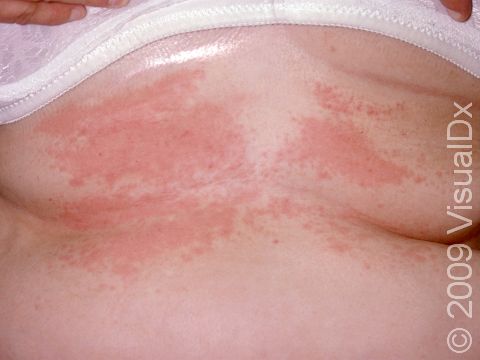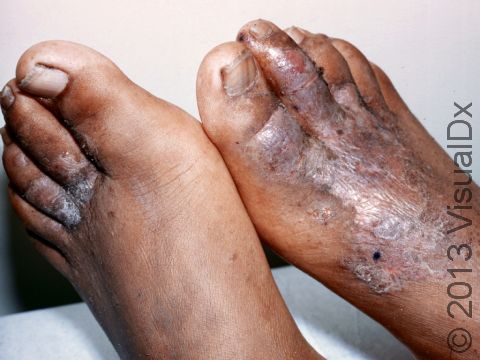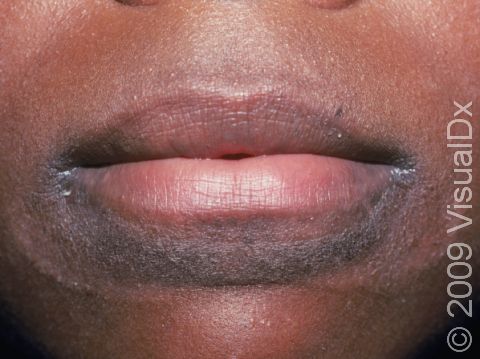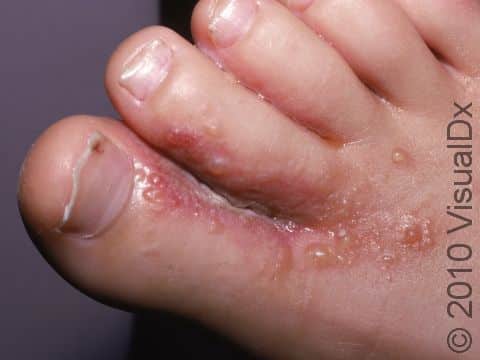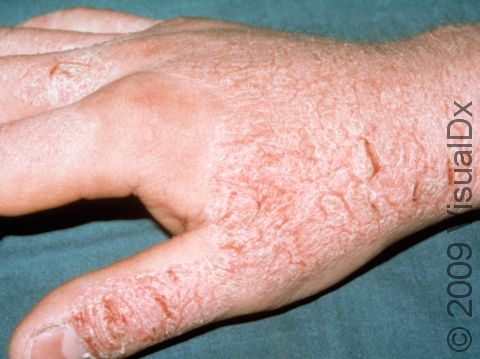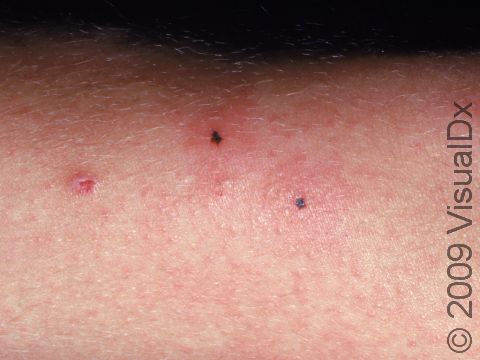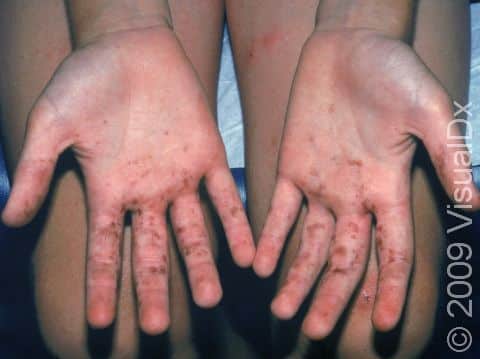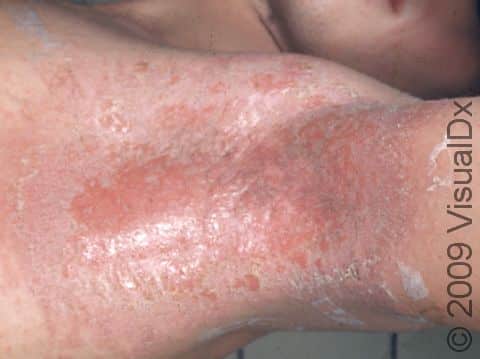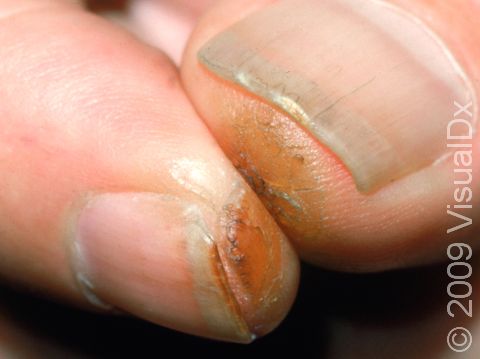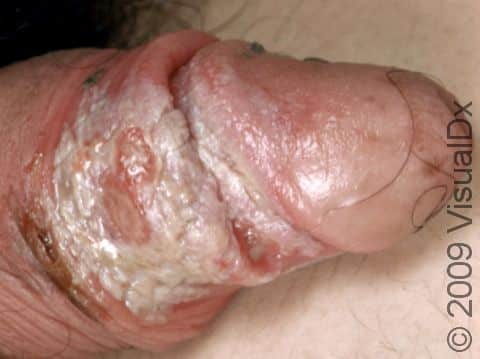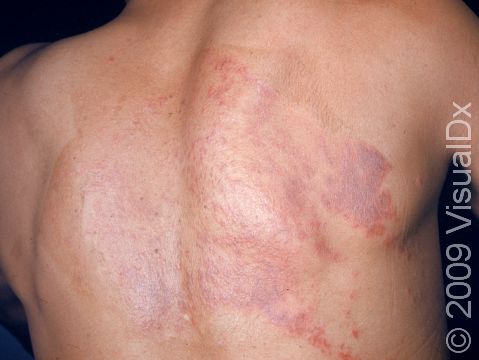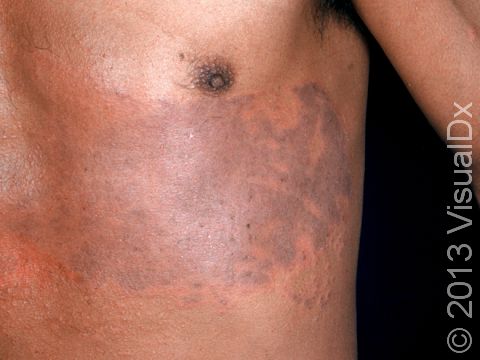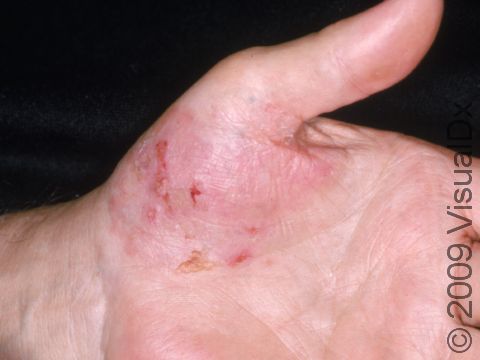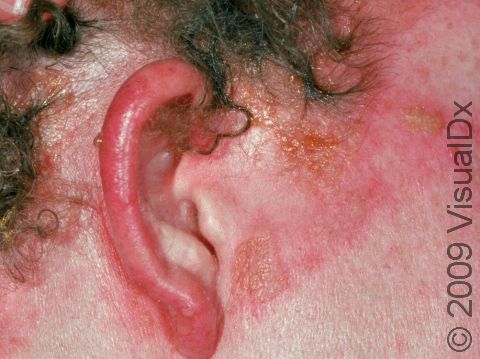Irritant Contact Dermatitis
Irritant contact dermatitis is the name given to the rash that develops when the skin is exposed to an irritant or substance or surface that bothers it. It is similar to allergic contact dermatitis except that in irritant contact dermatitis the rash typically appears very quickly (within hours) of exposure. This makes it slightly easier to diagnose as it can be easier to identify the irritant. The skin tends to burn or tingle at first and then become red and itchy. Treatment involves identifying and avoiding the offending irritant and perhaps cleansing the irritant from the skin when appropriate.
Who's At Risk?
Anyone of any age can develop irritant contact dermatitis. In babies and children who have very sensitive skin, even very common substances such as baby foods and lotions can produce an irritant contact dermatitis. In teens and adults, offending agents often include soaps, cleaners (solvents), and chemicals. People with eczema (atopic dermatitis) or sensitive skin are more likely to develop an irritant contact dermatitis.
Signs & Symptoms
The most common location for irritant contact dermatitis is the hands, though any body surface can be involved, including the genitals.
- Affected areas can appear pink to red.
- In long-term cases, affected areas may develop scale and cracks.
- In short-term cases, areas may have a sharp border corresponding to the areas of chemical exposure.
- On the fingertips, peeling of the skin, cracks, and scaling may be noted.
Self-Care Guidelines
- Remove the offending exposure and protect the skin from re-exposure.
- For irritated skin in body folds, consider a barrier cream with zinc oxide paste, such as Desitin®.
Treatments
- Your physician may recommend that you use petroleum jelly or a thick moisturizing cream applied directly to wet skin after bathing. Apply frequently (at least twice daily) to moisturize and protect the skin.
- Mild- to moderate-potency topical steroids may be prescribed if inflammation is pronounced.
Visit Urgency
Seek medical evaluation for a rash that does not resolve with self-care measures.
References
Bolognia, Jean L., ed. Dermatology, pp.227, 241-249. New York: Mosby, 2003.
Freedberg, Irwin M., ed. Fitzpatrick’s Dermatology in General Medicine. 6th ed, pp.1309-1314, 2370. New York: McGraw-Hill, 2003.
Last modified on August 16th, 2022 at 2:45 pm

Not sure what to look for?
Try our new Rash and Skin Condition Finder
